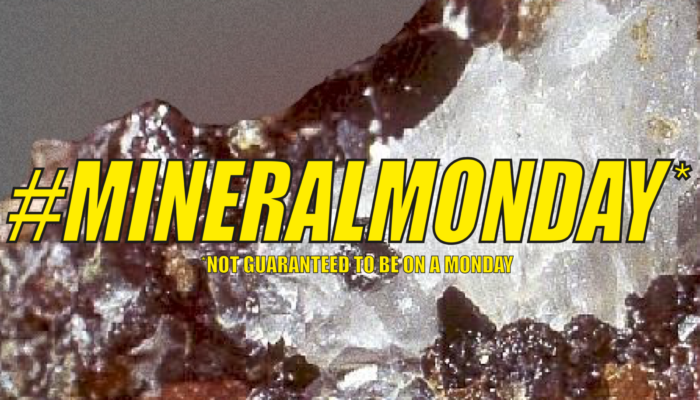
#MINERALMONDAY: your weekly dose of minerals every* Monday (* excluding the last few months of Mondays…).
A lot of bad things have happened since the start of the year, but perhaps the least important of these is the complete lack of minerals every Monday. Don’t worry, we are back, and what better way to start than with baksanite, Bi6Te2S3.
Why baksanite? Well, for the sake of sounding like ‘back’, it was either that or bakhchisaraitsevite, and I gave up trying to say that after the first three syllables.
Sure, if something’s hard then it’s probably worth doing. So what is baksanite? The formula is Bi6Te2S3 which means it’s made of bismuth (Bi), tellurium (Te) and sulphur (S). That’s a metal, a metaloid and a non-metal, respectively. This is a mineral that falls into the class of ‘sulphosalts’ – this is a group of minerals with some of the most complicated structures and chemistries out there.
Is it pretty? I’d say so. It has a ‘metallic lustre’, which basically means it looks like a metal. Don’t be fooled into thinking it would make good jewelery though, it has a harness of 1.5.
1.5 sounds pretty arbitrary, what does that mean? Ah, this is based on an old scale of measuring how hard things are called Moh’s hardness scale. The higher the number, the harder something is. Diamond is a 10, which is 4x harder than corundum at 9, which is 2x harder than topaz at 8. Calcite (3) is 7x harder than gypsum (2). It’s basically the hardness equivalent of measuring distances in inches, feet, rods, furlongs, miles and leagues.
Sounds like a disaster. So where can I find some of this pretty-looking but useless mineral? The type locality is in the Baksan valley in Russia. This is one of Russia’s top skiing resorts, and just a couple hundred kms from Sochi where the olympics were.
Well that’s a long way away. Tell me something else before I go? Here’s something. Because baksanite is made mostly from bismuth, which is even heavier than lead, this mineral is heavier than almost all of the common minerals. It comes in at a whopping 8 grams per cubic centimeter, which is even heavier than steel.
Nice. A heavy thing that looks like metal but is totally useless. See you next week (or later)!

